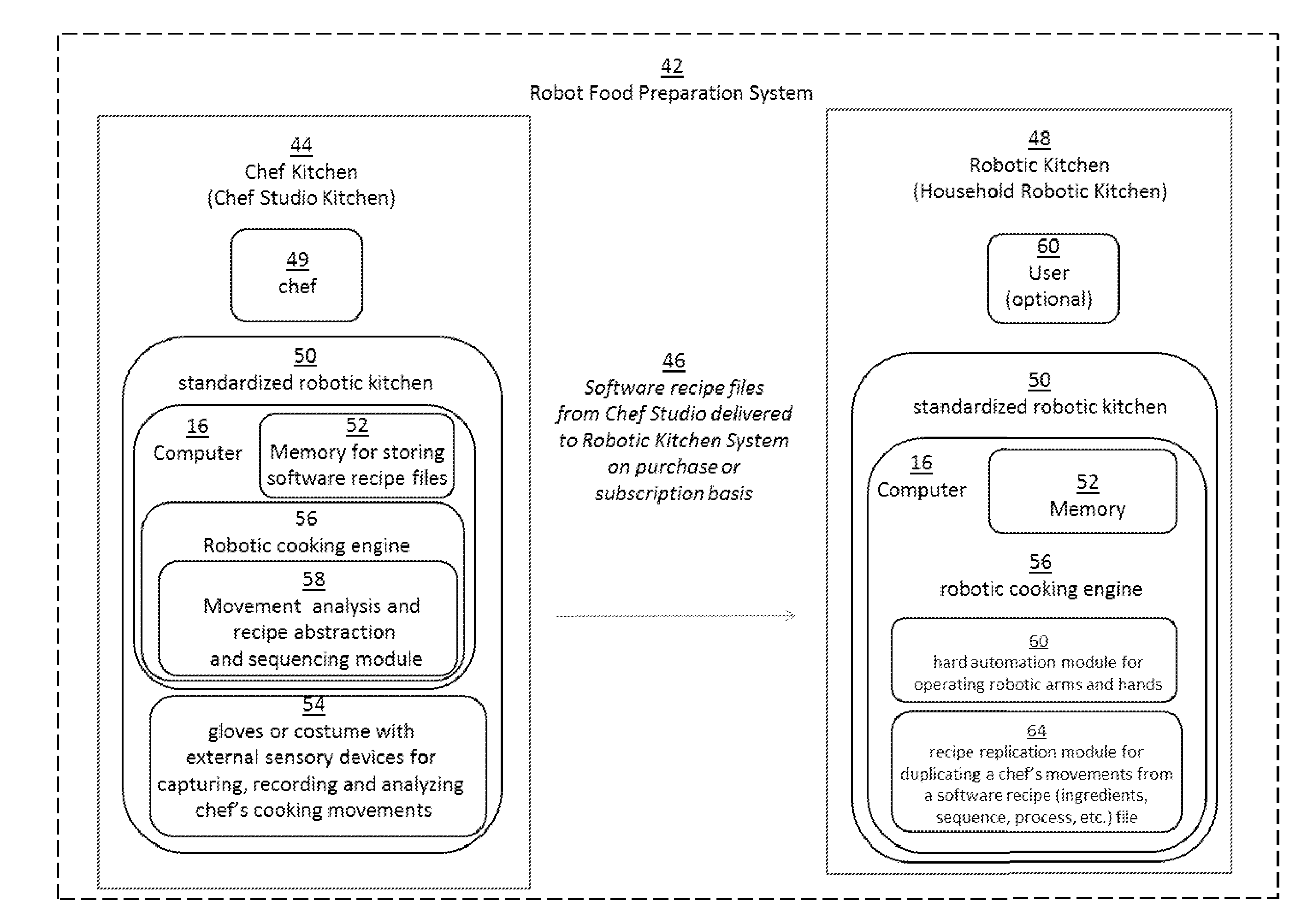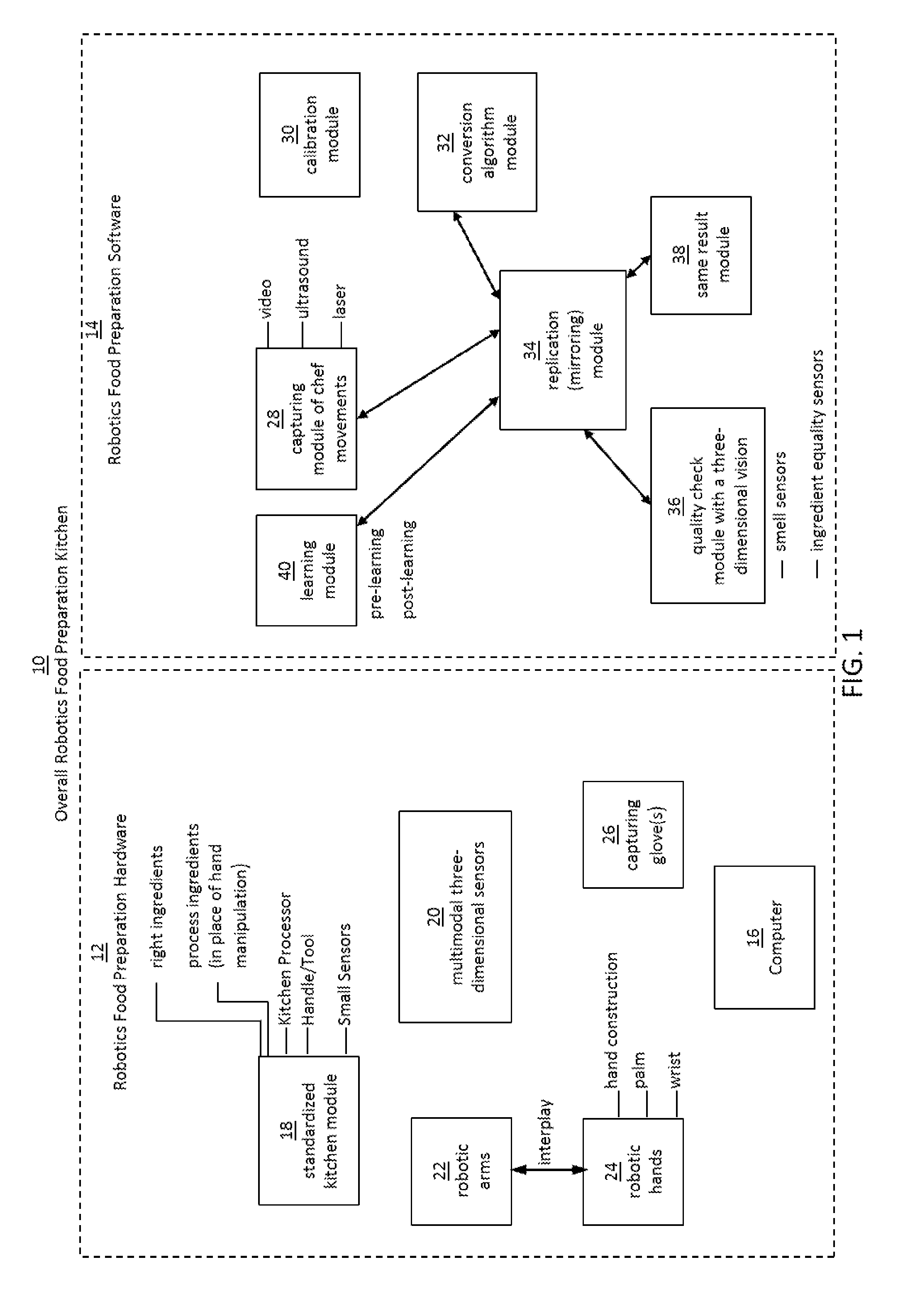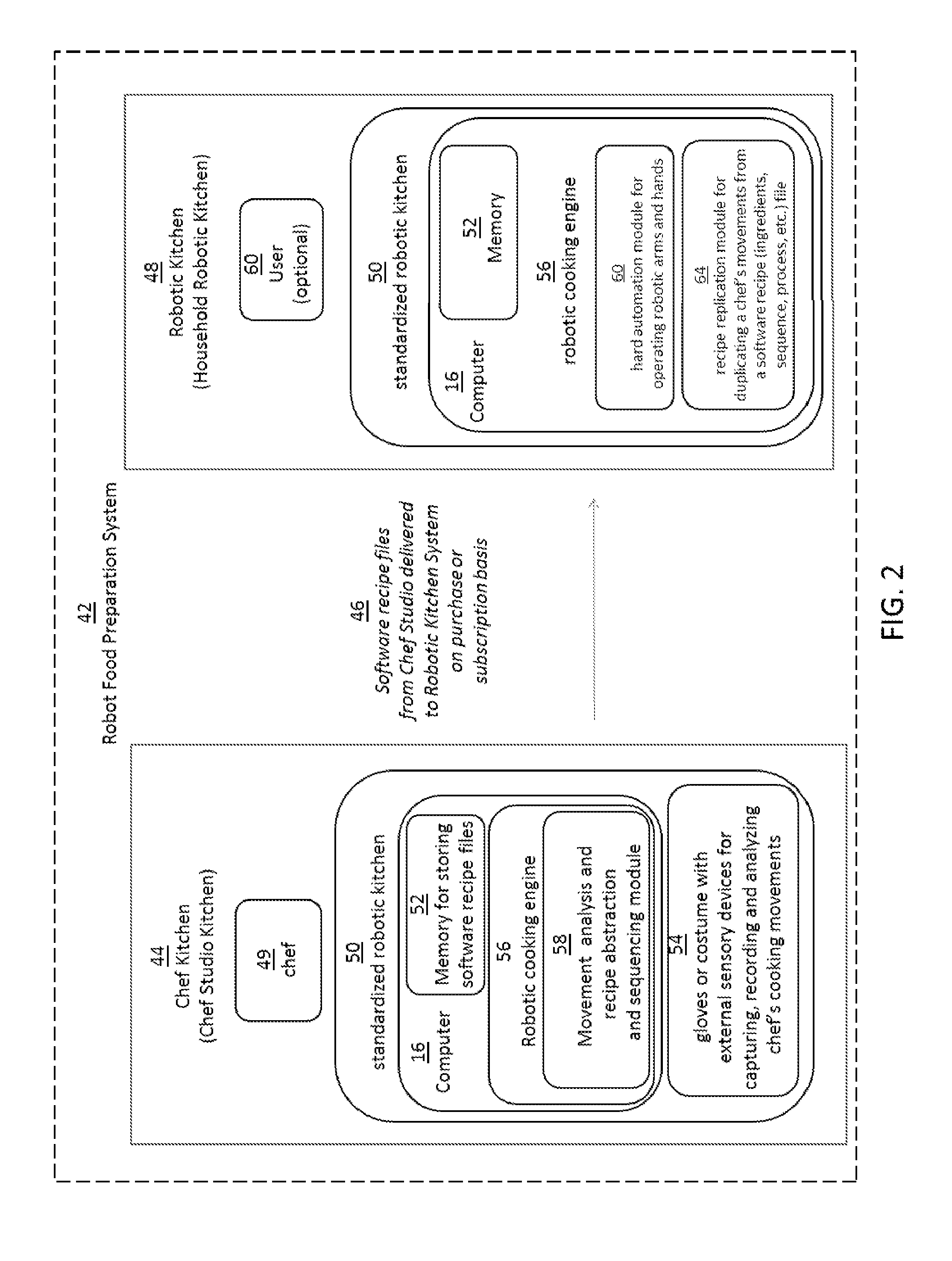Methods and systems for food preparation in a robotic cooking kitchen
a robotic and food technology, applied in the field of robotics and artificial intelligence, can solve the problems of not seeing a wide application in the robotic space for home-consumer use, and achieve the effect of reducing the cost of robotics and improving the efficiency of robotics
- Summary
- Abstract
- Description
- Claims
- Application Information
AI Technical Summary
Benefits of technology
Problems solved by technology
Method used
Image
Examples
first embodiment
[0168]FIG. 2 is a system diagram illustrating a food robot cooking system that includes a chef studio system and a household robotic kitchen system for preparing a dish by replicating a chefs recipe process and movements. The robotic kitchen cooking system 42 comprises a chef kitchen 44 (also referred to as “chef studio-kitchen”) which transfers one or more software recorded recipe files 46 to a robotic kitchen 48 (also referred to as “household robotic kitchen”). In one embodiment, both the chef kitchen 44 and the robotic kitchen 48 use the same standardized robotic kitchen module 50 (also referred as “robotic kitchen module”, “robotic kitchen volume”, or “kitchen module”, or “kitchen volume”) to maximize the precise replication of preparing a food dish, which reduces the variables that may contribute to deviations between the food dish prepared at the chef kitchen 44 and the one prepared by the robotic kitchen 46. A chef 52 wears robotic gloves or a costume with external sensory d...
second embodiment
[0400]FIG. 67 is a block diagram illustrating a robotic restaurant kitchen module configured in a U-shape layout with multiple pairs of robotic hands for simultaneous food preparation processing. Yet another embodiment of the invention revolves around another staged configuration for multiple successive or parallel robotic arm and hand stations in a professional or restaurant kitchen setup shown in FIG. 67. The embodiment depicts a rectangular configuration, even though any geometric arrangement could be used, showing multiple robotic arm / hand modules, each focused on creating a particular element, dish or recipe script step. The robotic kitchen layout is such that the access / interaction with any human or between neighboring arm / hand modules is both along a U-shaped outward-facing set of surfaces and along the central-portion of the U-shape, allowing arm / hand modules to pass / reach over to opposing work areas and interact with their opposing arm / hand modules during the recipe replica...
PUM
 Login to View More
Login to View More Abstract
Description
Claims
Application Information
 Login to View More
Login to View More - R&D
- Intellectual Property
- Life Sciences
- Materials
- Tech Scout
- Unparalleled Data Quality
- Higher Quality Content
- 60% Fewer Hallucinations
Browse by: Latest US Patents, China's latest patents, Technical Efficacy Thesaurus, Application Domain, Technology Topic, Popular Technical Reports.
© 2025 PatSnap. All rights reserved.Legal|Privacy policy|Modern Slavery Act Transparency Statement|Sitemap|About US| Contact US: help@patsnap.com



